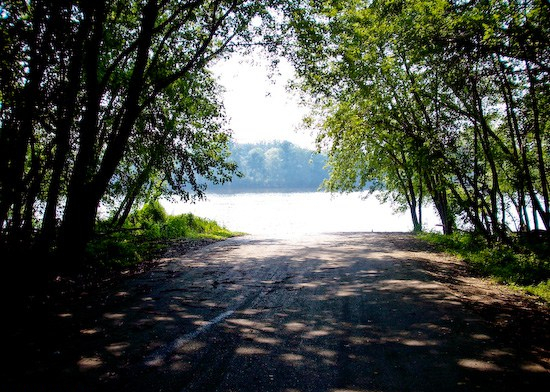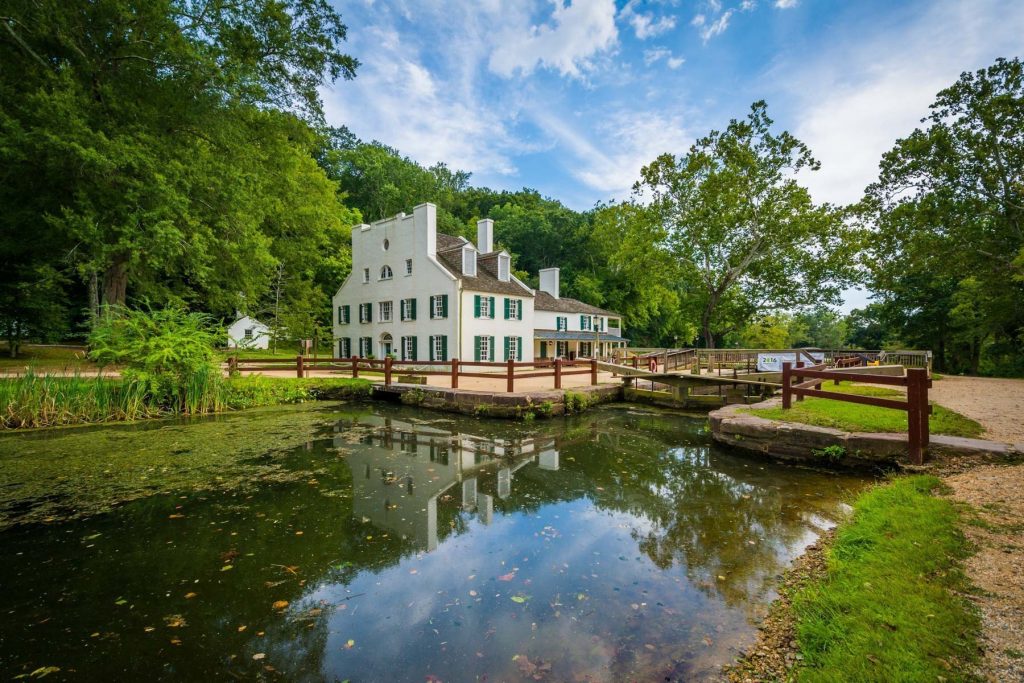ECW Weekender: The Monocacy Aqueduct
 Running alongside the Potomac River, the C&O Canal became part of the dividing line between the Union and the Confederacy during the Civil War. Strategically important for both sides, the canal was caught between the two warring armies. Union troops were stationed along the canal for protection, because union frequently used the canal for transportation of both troops and goods. As such, Confederate efforts were focused more on disrupting boat traffic and wreaking havoc on the canal.
Running alongside the Potomac River, the C&O Canal became part of the dividing line between the Union and the Confederacy during the Civil War. Strategically important for both sides, the canal was caught between the two warring armies. Union troops were stationed along the canal for protection, because union frequently used the canal for transportation of both troops and goods. As such, Confederate efforts were focused more on disrupting boat traffic and wreaking havoc on the canal.
The Monocacy Aqueduct, the largest of all the aqueducts along the C&O Canal, is over 500 feet long with 7 arches measuring 54 feet. This aqueduct is one of eleven stone structures designed to carry the canal across the major rivers and tributaries that drain into the Potomac River. Designed by Benjamin Wright, many of whom consider as the father of American Civil Engineering, the Monocacy Aqueduct is often described by many historians as one of the finest canal features in the United States. And is one of ten aqueducts remaining as features in the C&O Canal National Historical Park.
During the first two months of the war, the Confederacy had high hopes that the state of Maryland would eventually join the secession. Unfortunately those hopes would never come to fruition for the south. By June 1861, Confederate General Robert E. Lee ordered an evacuation of Harpers Ferry, but before leaving they disabled both the canal and the railroad in that area. To the East on June 10th, Lee ordered an officer in Leesburg, VA to disable the canal by taking out either a nearby dam or the Monocacy Aqueduct.

However, instead of destroying either of the structures, the Confederate soldiers drained the canal of water near Edwards Ferry.
This was not the only time the aqueduct was in peril: it would happen at least once more throughout the war. During the Antietam Campaign of 1862, the canal was an objective of Confederate army. Again, General Lee ordered for the aqueduct to be destroyed. Lee sent orders to two separate parties to complete the task. The first attempt on the aqueduct was made during the initial invasion of Maryland in early September 1862. At this time there were still many Confederate sympathizers who were employed by the canal and live in the general vicinity. Thomas Walter is a prime example of a canal employee that sympathized with the South. Thankfully, the lock keeper of lock 27 loved the canal and the Monocacy Aqueduct more than his loyalties to the South. When he received news that the structure was being threatened by Confederate General D.H. Hill, Walter pleaded with the commander, and convinced him that if they just drained the canal of water again that they would see the desired effect on the Union Army. Walter had saved the Monocacy Aqueduct for a time. A few days later the Confederacy made yet another attempt to destroy the structure. This second attempt involved blowing up the aqueduct; however, the structure was so well designed that the soldiers failed to drill holes that were substantially deep enough to place explosives in and cause damage to the structure.

Today you are able to visit the Monocacy Aqueduct, along the Chesapeake and Ohio Canal National Historical Park. The National Park stretches for 184.5 miles from Georgetown to Cumberland, MD. The park is open from sunup to sundown and offers a variety of activities and sites for visitors to enjoy. The canal has many other stories to tell and lesson to be learned beyond Civil War history. The history, paired with the wonderful views of the Potomac River, makes it a great place to come and relax for a day or even just an afternoon.
1 Response to ECW Weekender: The Monocacy Aqueduct